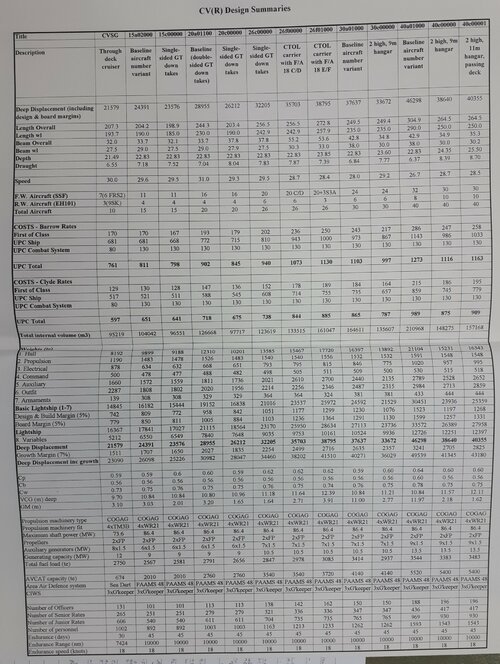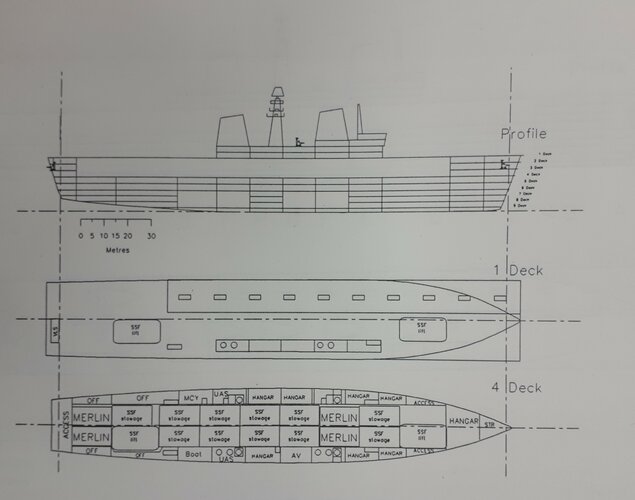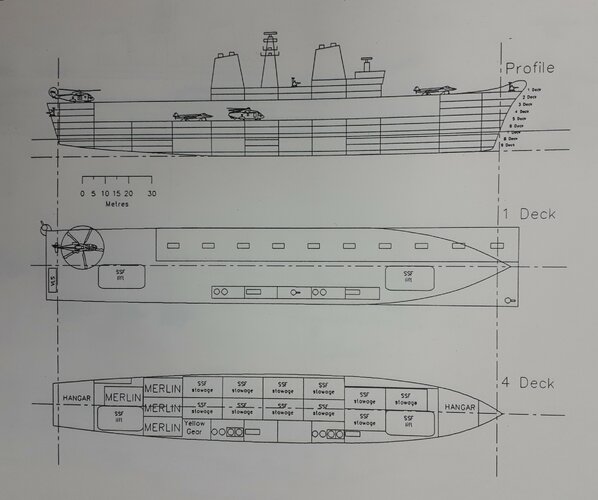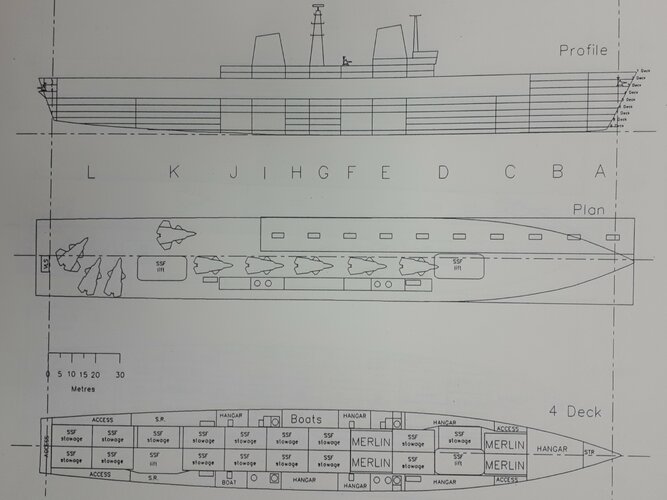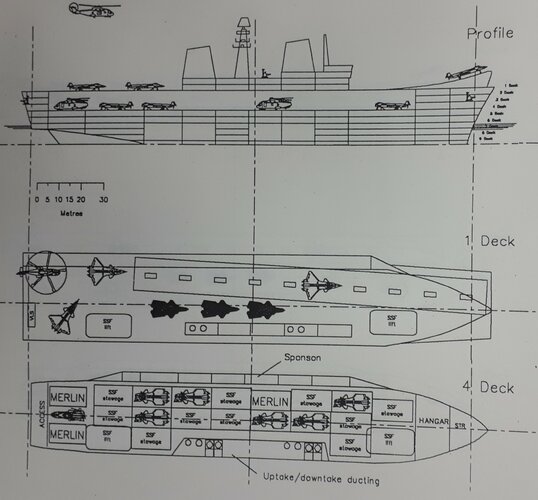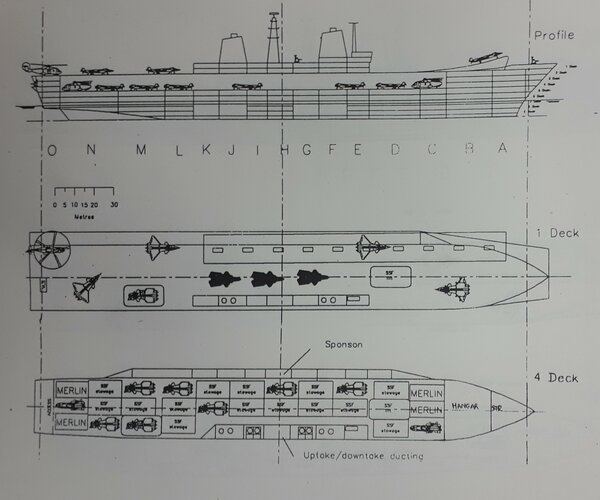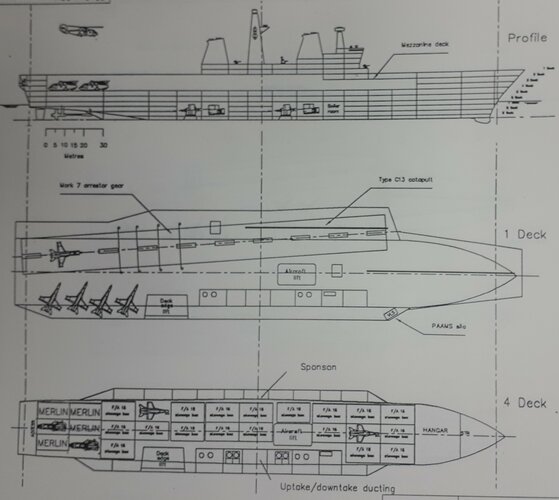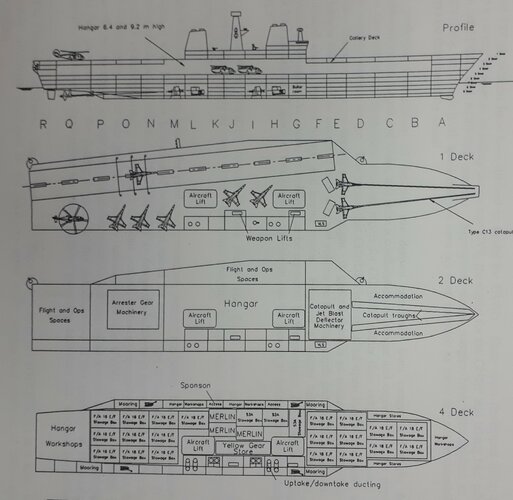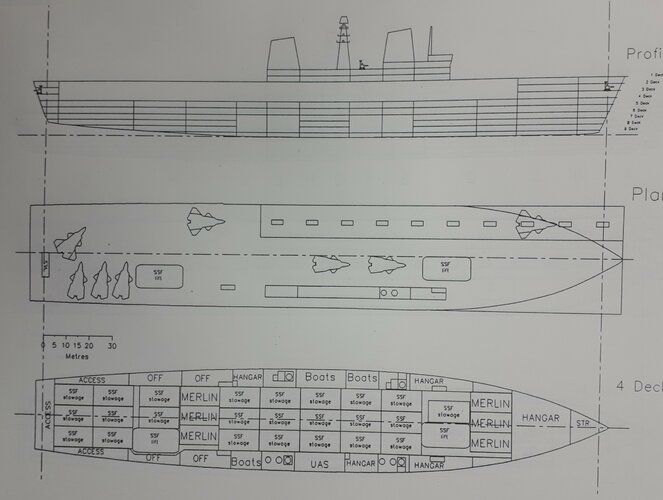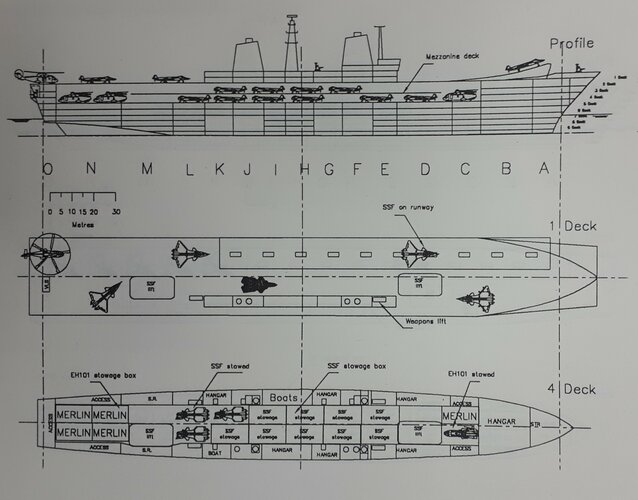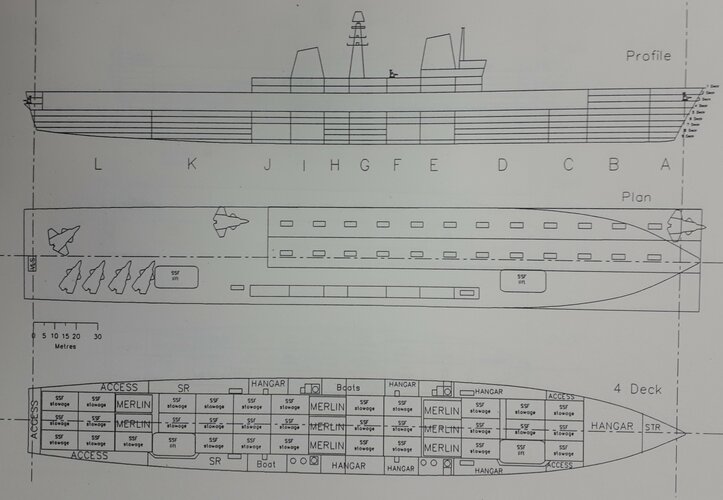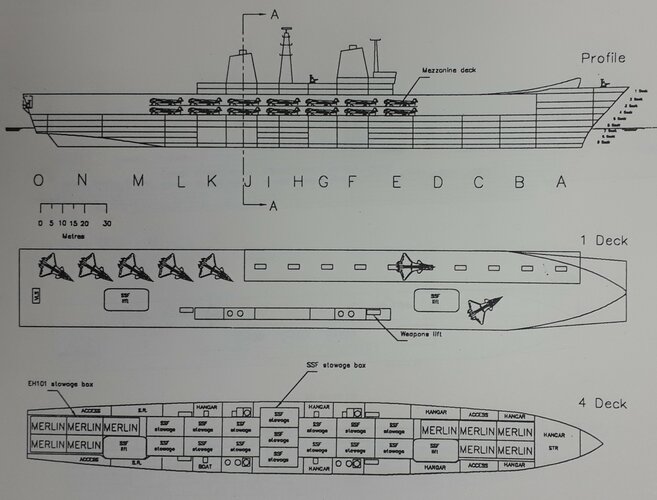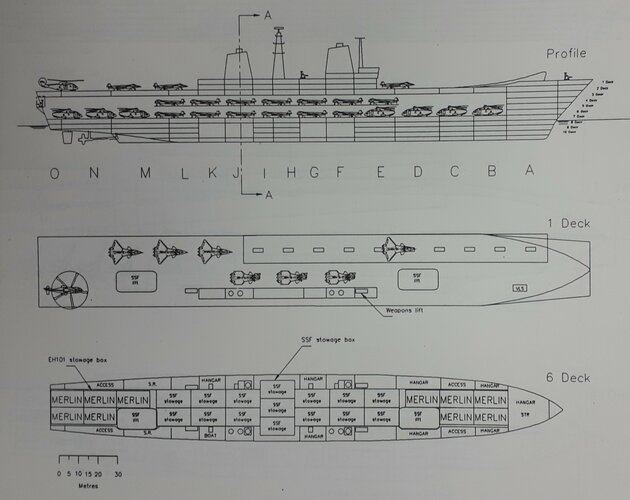In April 1995, the Director Future Projects (Naval) released the CV(R) Concept Exploration Summary Report into the concept studies for CV(R) - previously CVSG(R) and soon to become CV(F).
These studies pre-date the circa 1997 studies I posted earlier in this thread. These all feature the Lockheed STOVL JAST proposal (part of the MoD's STOVL Strike Fighter -SSF - programme) and Merlin. A couple of these designs (26f00000 and 26f010000) also featured the F/A-18 C/D and E/F respectively with C13 catapults and US Mk.7 arrester gear.
In October 1995, further studies included a navalised EF2000(N), but without folding wings.
There were also STUFT studies undertaken by BAeSEMA, which quite rightly ruled out this option as being feasible.
It also looks like a LPH-hull variant was also looked at around this time.

